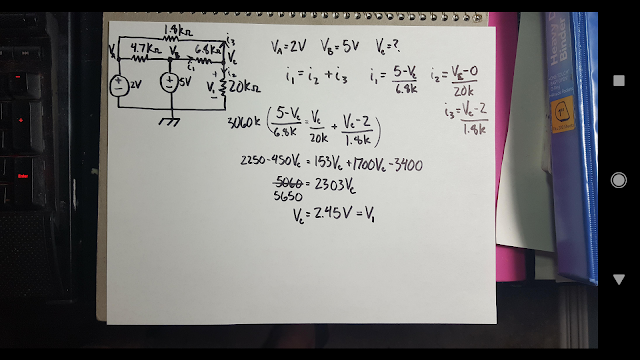Lab 4: Nodal Analysis III
Introduction
In this assignment, we will use nodal analysis to predict the circuit behavior prior to building and testing the circuit. We will then compare the measured circuit response with our expectations based on our analysis. We want to determine the voltage difference V1 and the current I1.Procedure
1. Construct the circuit below; measure and record all actual resistance values. Measure the voltage V1 and the current I1 in the circuit. Calculate a percent error between the measured values and your predictions.
2. Take a picture of your completed circuit.
Analysis
1. In the space below, provide a schematic of the circuit, labeled with reference node and values for node voltages as determined in the pre-lab. Provide estimates for the voltage V 1 and current I 1 , based on your node voltages.2. In the space below, provide a schematic of the circuit being testing, including measured resistance values.

3. Provide your measured values for the voltage V 1 and I 1. Provide a percent error between the measured and expected values of V 1 and I 1 . Comment on any significant differences between the measured and expected values.



Comments
Post a Comment